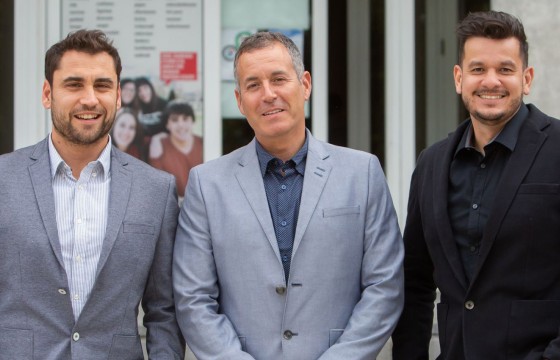
A study by the UPNA and Navarrabiomed indicates that increasing the intensity and quality of physical education classes improves students’ health
- JAMA Pediatrics, the journal of the American Pediatrics Association, has published the study results.
A group of researchers from Navarrabiomed and the Department of Health Sciences at the Universidad Pública de Navarra (UPNA) specializing in prescribing physical exercise to improve health and quality of life has published an article on the effects of increasing the quality and quantity of physical education (PE) classes on improving the health-related physical fitness and fundamental motor skills of young people (ages 3 to 18). The article was recently published in JAMA Pediatrics (Journal of the American Medical Association).
The study analyzed data from approximately 50,000 young people and concluded that qualitative strategies such as including games and activities involving a high level of cardiovascular and muscular work, as well as better methodological session planning could provide young people with healthy benefits in terms of fitness and fundamental motor skills.
In addition to Antonio García-Hermoso, Robinson Ramírez-Vélez, Alicia María Alonso-Martínez and Mikel Izquierdo Redín (who form part of Navarrabiomed, Idisna and UPNA), the article authors also include Miguel Ángel Pérez-Sousa (Universidad de Huelva) and Rodrigo Ramírez-Campillo (Universidad de Los Lagos, Osorno, Chile).
Exercise is necessary to improve physical fitness
The study researchers also point out that it is not always possible to increase the number of hours spent per week on exercise or PE classes during school hours and therefore recommend improving the efficiency of these sessions by using strategies such as high-intensity interval training (HIIT), and muscle strength, jumping or circuit training. However, the authors mention that, despite the benefits of these strategies during school hours, young people should also participate in more out-of-school physical activities based on their age group (i.e., 60 minutes a day of moderate to intense physical activity).
They argue that PE classes also offer other benefits not specifically related to physical activity, such as helping young people develop socialization, teamwork and body language skills, and fostering healthy habits. Above all, the authors highlight the fact that improving physical fitness among school kids is a fundamental short- and long-term aspect of good health, given the high rates of obesity and physical inactivity among young people, which the authors refer to as “a public health problem that must be addressed by schools.”


